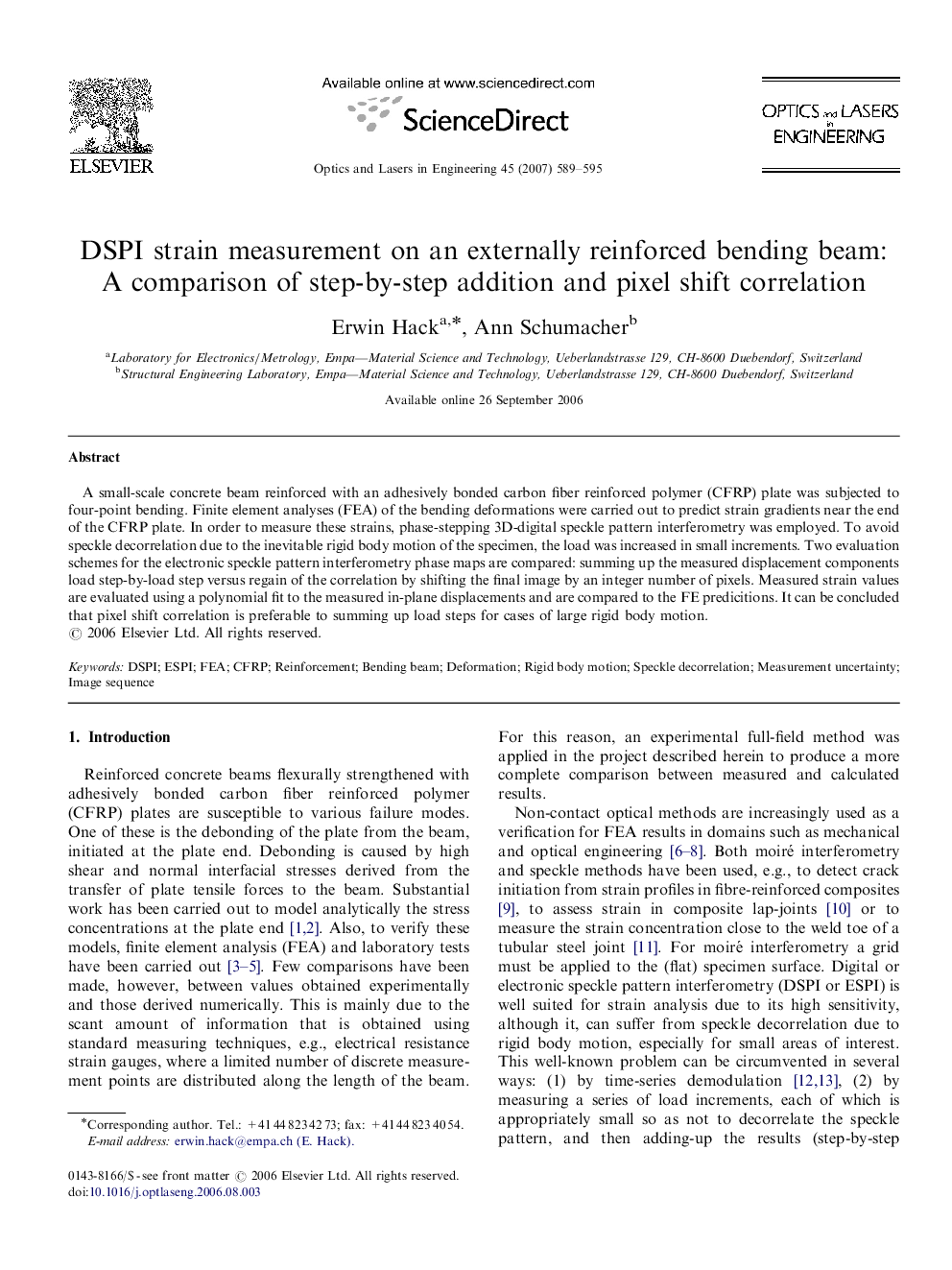| Article ID | Journal | Published Year | Pages | File Type |
|---|---|---|---|---|
| 735356 | Optics and Lasers in Engineering | 2007 | 7 Pages |
A small-scale concrete beam reinforced with an adhesively bonded carbon fiber reinforced polymer (CFRP) plate was subjected to four-point bending. Finite element analyses (FEA) of the bending deformations were carried out to predict strain gradients near the end of the CFRP plate. In order to measure these strains, phase-stepping 3D-digital speckle pattern interferometry was employed. To avoid speckle decorrelation due to the inevitable rigid body motion of the specimen, the load was increased in small increments. Two evaluation schemes for the electronic speckle pattern interferometry phase maps are compared: summing up the measured displacement components load step-by-load step versus regain of the correlation by shifting the final image by an integer number of pixels. Measured strain values are evaluated using a polynomial fit to the measured in-plane displacements and are compared to the FE predicitions. It can be concluded that pixel shift correlation is preferable to summing up load steps for cases of large rigid body motion.
